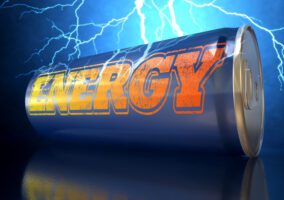Maximize Fat Burning with High-Intensity Interval Training
How can a shorter workout yield more impressive results? By making it more intense!
High-intensity interval training (HIIT) can burn more fat and provide a better workout in less time than a conventional aerobic training. Let’s say that you’re running, biking, or walking briskly five days per week. By just replacing two of those workouts per week with HIIT, you’ll experience some amazing results!
The concept behind HIIT is that you engage in an exercise or series of exercises alternating between short burst intervals at maximum output with longer intervals of moderate exercise. Those short bursts are anaerobic, while the longer recovery intervals are aerobic.
Just a 10 minute HIIT routine will out-do 30 minutes of traditional aerobic exercise in a fat-burning contest. And high-intensity interval training can boost your aerobic capacity three to four times faster than conventional endurance training.[1]Why HIIT works
Exercise in general is one of the keys to optimizing health of the mind and body. Physical activity helps burn fat, regulates the production of insulin, helps maintain proper blood glucose levels, boosts the immune system, promotes brain health, improves balance and coordination, increases bone strength, and a host of other benefits.
The key to why HIIT works is that it deprives your muscles of oxygen for short periods of time (anaerobic). Doing so triggers metabolic changes in your body that continue to operate up to an hour after stopping the exercise. So your body continues to burn fat well past the end of your workout.[2] In fact, your body develops greater efficiency in burning fat under other conditions as well.[3][4][5]
Benefits of HIIT
- Achieve greater results in less time. In about one-fourth the time you’d spend in a traditional aerobic workout, you can achieve greater results in terms of both fat-burning and cardiovascular endurance.
- Burn more fat. Due to its high intensity and anaerobic properties, HIIT not only burns more calories during your workout, but following it as well.
- Increase aerobic fitness and muscle strength. High-intensity interval training has been shown to build muscle and maximize aerobic fitness more effectively and efficiently than conventional routines.
- Retain muscle while losing fat. A traditional aerobic workout regimen not only burns fat, but often results in muscle loss along with it. The anaerobic nature of the HIIT workout helps you keep and build your muscle.
- Stimulate the production of human growth hormone (HGH). Human growth hormone gives us vibrant health and strength and is important in the production of estrogen and testosterone. Once again, it’s the anaerobic element of HIIT that fuels the production of HGH. You’ll find that HIIT workouts will boost your energy and increase your sexual drive.
How do I begin high-intensity interval training?
- If you are not currently in a regular exercise program, you should check with your doctor and start out very slowly. You can adjust high-intensity interval training to meet your current fitness level.
- You can choose nearly any exercise or combination of exercises for HIIT. For example, if you are currently a runner or bicyclist, you could transform a couple of your workouts each week to HIIT. The intent is not to do away with your aerobic endurance training, but to enhance it with HIIT.
- Another option is to create an HIIT workout with a set of new exercises involving a variety of muscle groups.
- You do not need any special exercise equipment, although comfortable and appropriate shoes and clothes are a must. Also, depending on the type of exercises you choose, a workout mat may be helpful. If you already go to the gym, or have exercise equipment at home, you can easily adapt the available equipment to high-intensity interval training.
- Choose a workout duration and interval times that best meet your current fitness ability and the type of exercise that you choose. The short, high-intensity bursts could last anywhere from 30 seconds to three minutes; and the longer, moderate exercise recovery intervals may last from two minutes to six minutes respectively. Experiment and find what works best for you.
- Be sure to conduct five-minute warm-ups and cool-downs and stretch before and after workouts to avoid injury and increase flexibility.
- Keep score on yourself and track your progress!
An example of 20 minutes of HIIT on a treadmill might look like this:
- Five 5 minutes of stretching and warm-up.
- Two minutes of running at a moderate pace.
- 30 seconds of sprinting as fast as you can.
- Two minutes of running at a moderate pace.
- 30 seconds of sprinting as fast as you can.
- Two minutes of running at a moderate pace.
- 30 seconds of sprinting as fast as you can.
- Two minutes of running at a moderate pace.
- 30 seconds of sprinting as fast as you can.
- Five minutes of cool-down and stretching.
I’ve employed HIIT in one of my favorite sports—hiking. The trails I hike are hilly, allowing me to use the up-hills for my short bursts while using the down-hills and straightaways for my long intervals. This routine provides a great HIIT workout!
How will you integrate HIIT into your routine? What exercise(s) will you use? What intervals will you start out with? Have fun with it and watch your health and vitality improve!


























